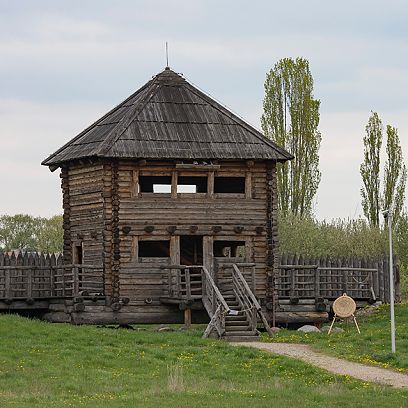Kalisz Piast Settlement in Zawodzie
From 9/10th to 13th century a fortified settlement was located here – the cradle of Kalisz. In the times of Mieszko III the Old (Polish: Mieszko III Stary) it enjoyed its greatest glory. He built the romanesque collegiate church of St. Paul. In 1233 the Duke of Silesia Henry the Bearded (Polish: Henryk Brodaty) destroyed the settlement and he established a new town centre – to the north of the settlement – called the New Town. About the year 1257 the town was granted municipal autonomy.
Archaeological discoveries in the Old Town are one of the most important elements of Kalisz heritage. The foundations of the collegiate church, where Mieszko III the Old (Polish: Mieszko III Stary) was buried, were discovered in the settlement, together with coins, ceramic dishes, ornaments, bone and metal tools. In 2007 works on the reconstruction of the settlement were carried out. The collegiate church of St. Paul, cottages representing the types of medieval wooden buildings, a bridge, an entrance gate, a replica of a defensive tower from the 13th century, a palisade and a barrow were reconstructed. Next to the reserve you can see the only wooden church in the city – St. Adalbert church built in 1798. According to tradition, in the 12th century there was a St. Adalbert church in the settlement – the first parish in Zawodzie. The interior of the temple is single-nave, decorated with polychrome.

